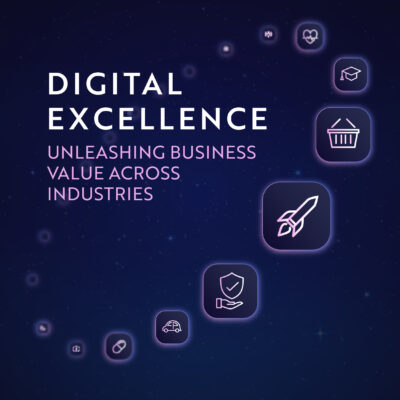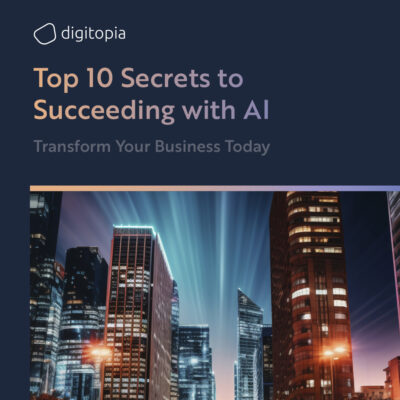
The mining industry is undergoing a significant transformation as digital technologies revolutionize traditional operations and offer new opportunities for efficiency and safety. As global demand for minerals and resources grows, mining companies are leveraging digital transformation to optimize processes, reduce costs, and enhance sustainability. This article explores how digital technologies are reshaping the mining industry and provides strategic insights for executives seeking to achieve digital mining excellence and unlock business value.
Impact Assessment: Key Technologies Transforming Mining for Excellence
- Internet of Things (IoT):
- Connected Operations: IoT devices enable real-time monitoring of equipment, vehicles, and environmental conditions, providing actionable insights to optimize mining operations.
- Predictive Maintenance: IoT sensors collect data on equipment health and performance, predicting maintenance needs to prevent breakdowns and minimize downtime.
- Artificial Intelligence (AI) and Machine Learning:
- Exploration and Resource Estimation: AI algorithms analyze geological data to identify potential mining sites and estimate resource quantities, improving exploration accuracy and efficiency.
- Process Optimization: AI-driven analytics optimize mining processes, reducing energy consumption, improving yield, and enhancing operational efficiency.
- Automation and Robotics:
- Autonomous Vehicles: Autonomous haul trucks and drilling equipment enhance safety and efficiency by reducing human intervention in hazardous environments.
- Robotic Drilling Systems: Robotic systems automate drilling operations, increasing precision and reducing labor costs.
- Data Analytics and Big Data:
- Operational Insights: Advanced analytics provide insights into production performance, enabling data-driven decision-making and process improvements.
- Safety and Risk Management: Data analytics enhance safety by identifying potential hazards and optimizing risk management strategies.
- Drones and Aerial Imaging:
- Site Monitoring: Drones provide aerial imagery and data for surveying and monitoring mining sites, improving accuracy and efficiency in planning and operations.
- Environmental Impact Assessment: Drones help assess environmental impact and compliance, supporting sustainability initiatives and regulatory compliance.
Benefits and Challenges of Mining Excellence
- Benefits:
- Enhanced Operational Efficiency: Digital technologies streamline mining operations, reducing costs, improving resource allocation, and increasing productivity.
- Improved Safety: Automation and data analytics reduce human exposure to hazardous conditions, enhancing safety and risk management.
- Sustainability and Compliance: Advanced technologies support sustainable practices and regulatory compliance, minimizing environmental impact and enhancing corporate responsibility.
- Challenges:
- Technological Integration: Integrating new digital technologies with existing systems requires careful planning and investment, particularly for legacy mining operations.
- Cybersecurity Risks: The increased reliance on digital technologies exposes mining companies to cyber threats, necessitating robust security measures.
- Skill Gaps: The adoption of advanced technologies requires a workforce with new skills and expertise, highlighting the need for training and development.
Strong Use Cases
- Predictive Maintenance in Mining:
- Companies like Rio Tinto use IoT sensors and AI to monitor equipment health and predict maintenance needs, reducing downtime and increasing operational efficiency.
- Autonomous Haulage Systems:
- Mining giants like BHP employ autonomous haul trucks to transport materials, enhancing safety and efficiency in open-pit mining operations.
- Drones for Site Monitoring:
- Barrick Gold utilizes drones for aerial imaging and surveying, improving accuracy and efficiency in mine planning and environmental assessments.
Mining Excellence: Compelling Case Studies
Rio Tinto: Automation and AI in Mining: Rio Tinto has implemented automation and AI technologies across its mining operations to enhance efficiency and safety. By leveraging autonomous haulage systems and AI-driven process optimization, Rio Tinto reduces operational costs, increases productivity, and improves safety outcomes. This approach demonstrates the transformative potential of digital technologies in mining.
Newmont Corporation: IoT-Enabled Predictive Maintenance: Newmont Corporation utilizes IoT sensors to monitor equipment health and predict maintenance needs in real time. By preventing equipment failures and minimizing downtime, Newmont enhances operational efficiency and reduces maintenance costs. This initiative highlights the impact of IoT in optimizing mining operations.
Unlocking Mining Excellence: Key Recommendations
- Invest in Automation and AI Technologies:
- Prioritize investment in automation and AI technologies to enhance operational efficiency, improve safety, and reduce costs. Embrace data-driven decision-making to optimize resource extraction and process performance.
- Enhance Safety and Risk Management:
- Leverage digital technologies to improve safety and risk management strategies. Implement autonomous systems and data analytics to reduce human exposure to hazardous conditions and optimize safety protocols.
- Utilize the Digital Maturity Index (DMI):
- Conduct regular DMI assessments to evaluate digital capabilities, identify gaps, and develop strategic roadmaps for transformation. Use these assessments to guide decision-making and prioritize initiatives.
- Strengthen Cybersecurity Measures:
- Implement robust cybersecurity strategies to protect digital assets and sensitive information. Ensure compliance with industry standards and regulations to safeguard against cyber threats.
- Develop a Skilled Workforce:
- Invest in training and development programs to equip employees with the skills needed for advanced mining technologies. Foster a culture of continuous learning and innovation to support digital transformation and excellence.
Conclusions
The mining industry is undergoing a digital transformation that presents both challenges and opportunities. By embracing digital technologies and focusing on efficiency and safety, mining companies can unlock significant business value and maintain a competitive edge. Executives must prioritize digital transformation initiatives and leverage tools like the Digital Maturity Index to guide their journey toward digital mining excellence. In doing so, they can drive sustainable growth and profitability while delivering responsible and innovative mining solutions.




















